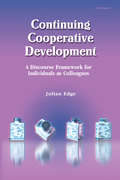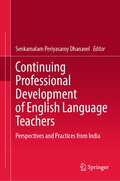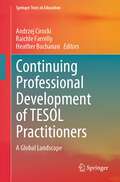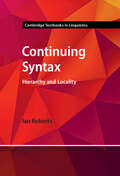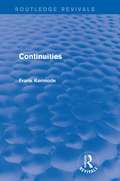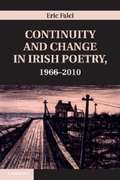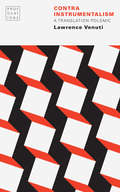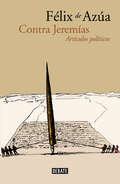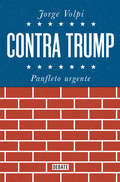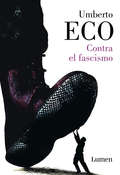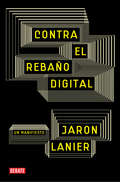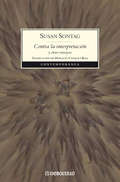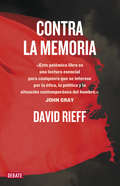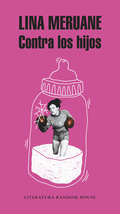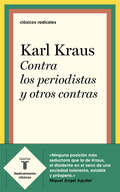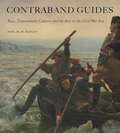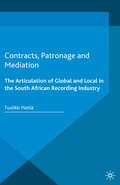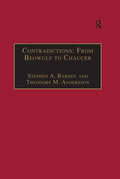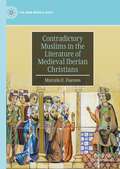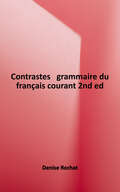- Table View
- List View
Continuing Cooperative Development: A Discourse Framework for Individuals as Colleagues
by Julian EdgeIn Continuing Cooperative Development, a series of guided tasks helps the reader acquire specific skills of listening and responding that, in turn, help a speaker to express and articulate thoughts and plans that lie just beyond what they knew that they knew. By adopting a certain style of speaking and listening to colleagues for agreed periods of time, motivated professionals can take individual control of their own development and increase the feeling of collegiality in their workplace. Continuing Cooperative Development draws on Edge's experience of more than ten years using this framework worldwide and provides authentic examples to guide the reader. This interactive framework is demonstrated in the book as part of a reflective teaching approach in response to everyday classroom problems, and also as part of a more formal, action-research approach to the formulation of local educational theory. The key theme of this book is the power of non-judgmental discourse to facilitate the development of ideas and action, accessing both cognitive and emotional intelligence. The transcribed and interpreted data of authentic interactions from the Americas, Europe, and Asia serve as evidence for the argument and as guidelines for implementation. The work is set in the field of TESOL, although its relevance reaches across discipline boundaries. The teachers featured in the book have duties ranging from the instruction of young learners to the supervision of doctoral research. The common denominator is that these people are motivated educators, committed to extending their own understanding and developing their own style of being an aware professional.
Continuing Professional Development of English Language Teachers: Perspectives and Practices from India
by Senkamalam Periyasamy DhanavelThis book provides a comprehensive understanding of India's continuing professional development (CPD) landscape. It examines the issues surrounding the professional development of English language teachers in India at the tertiary level from multiple perspectives. Further, it evaluates various models of continuing professional learning (CPL) and emphasizes the transformative model as a solution to the social, administrative, or other impediments teachers encounter in their lives. Importantly, it presents examples, solving academic and non-academic problems in formal and informal, and face-face and technology-mediated forms of teaching and learning by teachers of English in different contexts. It discusses the latest developments in the literature related to the transformative and reflective approach to classroom problems faced by teachers on the ground such as classroom environment, students' socio-economic background, teachers education, and teacher assessment. Also, it positions continuing professional development (CPD) as having transformative power in teaching English in India and how it can improve students' learning opportunities. The book is relevant to English language teachers, teacher educators, and researchers in India and across the globe to address significant issues in the field: how to handle every classroom situation and how to train oneself as a teacher as well as a teacher educator.
Continuing Professional Development of TESOL Practitioners: A Global Landscape (Springer Texts in Education)
by Andrzej Cirocki Heather Buchanan Raichle FarrellyThis textbook serves as a current and comprehensive resource on effective Continuing Professional Development (CPD) for TESOL practitioners in various contexts around the world at various stages in their careers. The practices described by language teachers, teacher educators and professional development providers in this book offer a vision of critical issues to consider when designing and evaluating professional development opportunities. Effective professional development requires careful planning informed by the realities of the local context and the specific needs of the teachers. This textbook is designed to support those who provide professional development opportunities by presenting global perspectives on professional development for a range of teaching contexts at different language levels. Each chapter includes a discussion about the type and source of support available in the given context, as well as a reflection on the challenges that exist for both teachers and CPD providers. These insights serve to help CPD designers and providers as they problematize teacher development opportunities in their context. Each chapter concludes with a synthesis of the strengths of CPD in the local context and a discussion of future directions that target opportunities for transformation and improvement. This volume celebrates teachers, teacher educators and CPD providers around the world. High-impact practices are presented from fifteen countries: Cameroon, Canada, Costa Rica, Indonesia, Kazakhstan, Malta, New Zealand, Norway, Oman, Qatar, South Africa, South Korea, Sri Lanka, Tanzania and the United States of America.
Continuing Syntax: Hierarchy and Locality (Cambridge Textbooks in Linguistics)
by Ian RobertsA logical and clear exposition of hierarchy and locality by a leading figure in the field, Continuing Syntax takes students from an introductory level of syntactic theory to an understanding of cutting-edge research in the field. A comprehensive range of topics is covered, including configurationality, head-movement, clause structure, nominal structure, subjacency, barriers and phases, ensuring that students have a thorough understanding of all the main components of contemporary theory. The many example sentences, extensive glossary, end-of-chapter exercises and annotated further reading lists allow readers to embed and extend their knowledge as they progress through the book. A self-contained work ideal for intermediate-level students, this volume also builds on the author's Beginning Syntax, and lays the foundation for a third volume, Comparing Syntax, which introduces formal syntactic typology.
Continuities (Routledge Revivals)
by Sir Frank KermodeContinuities, first published in 1968, is a collection of reviews by Frank Kermode that appeared from 1962 to 1967. Kermode discusses a variety of novelists, poets, and critics, including T. S. Eliot, Northrop Frye, Wallace Stevens, Edmund Wilson, and Wallace Stevens. History and politics are two important aspects that are discussed in regards to these writers. This book is ideal for students of English literature.
Continuity and Change in Irish Poetry, 1966–2010
by Eric FalciIn this book, Eric Falci reshapes the story of Irish poetry since the 1960s. He shows how polemical arguments concerning the role of poetry in 1960s Ireland evolve into a set of formal and compositional strategies for emerging Irish poets in the mid 1970s and beyond. His study presents a cohesive picture of the relationship between Northern Irish poetry from the Republic of Ireland since World War II and traces the lineage of lyric practice from a unique historical perspective. At the same time, it recontextualizes late twentieth-century Irish poetry within the long Irish poetic tradition, places Irish writing more accurately within the field of postwar Anglophone poetry and offers a new account of lyric's critical capacities. Of interest to Irish studies and twentieth-century poetry specialists, this book provides a much-needed guide to some of the most inventive and notable poetry written in the past forty years.
Contra Instrumentalism: A Translation Polemic (Provocations)
by Lawrence VenutiContra Instrumentalism questions the long-accepted notion that translation reproduces or transfers an invariant contained in or caused by the source text. This “instrumental” model of translation has dominated translation theory and commentary for more than two millennia, and its influence can be seen today in elite and popular cultures, in academic institutions and in publishing, in scholarly monographs and in literary journalism, in the most rarefied theoretical discourses and in the most commonly used clichés.Contra Instrumentalism aims to end the dominance of instrumentalism by showing how it grossly oversimplifies translation practice and fosters an illusion of immediate access to source texts. Lawrence Venuti asserts that all translation is an interpretive act that necessarily entails ethical responsibilities and political commitments. Venuti argues that a hermeneutic model offers a more comprehensive and incisive understanding of translation that enables an appreciation of not only the creative and scholarly aspects of what a translator does but also the crucial role translation plays in the cultural and social institutions that shape human life.
Contra Jeremías: Artículos políticos
by Félix de AzúaUna antología de los mejores ensayos de Félix de Azúa sobre cuestiones políticas y sociales. A lo largo de estos artículos, escritos entre 2007 y 2012, Félix de Azúa, con la lucidez, el valor y el sentido del humor que le caracterizan, analiza el nacimiento y el desarrollo de la crisis que está cambiando traumáticamente la política en todo el mundo. Los nacionalismos, la evolución de la izquierda, la herencia del siglo xx, la corrupción, la justicia, las mutaciones de la democracia o las convulsiones de Europa son algunos de los asuntos que se abordan en estas páginas iluminadoras, contundentes, una invitación a pensar nuestro presente sin los anteojos de las ideas recibidas. «Eso es, para mí, la política en su sentido más honesto: lo que cada cual lleva a cabo desde su responsabilidad, con imaginación e iniciativa, para impedir los atropellos del poder.»Félix de Azúa
Contra Trump: Panfleto urgente
by Jorge VolpiCon el mejor estilo de los panfletos y libelos políticos de los siglos XIX y XX, Jorge Volpi alza la voz en contra de Trump, sus ideas y sus acciones. ¿Por qué Donald Trump fue electo presidente de Estados Unidos? Su victoria electoral dice mucho sobre el país más poderoso del mundo y sus ciudadanos, pero también sobre nosotros como sociedad. Ahora, ante la xenofobia, la misoginia, el nacionalismo, el populismo y otros azotes característicos de ese régimen, ¿cuáles son las mayores amenazas para México? Jorge Volpi propone un entendimiento claro y racional de su peligroso pensamiento, y también políticas, contrapesos y resistencias a las peores lacras de su administración.
Contra el fascismo
by Umberto EcoLas catorce claves de Umberto Eco para reconocer el fascismo: un manifiesto urgente. «Un genio inagotable, voraz, que construye y deconstruye sin cesar, de inteligencia deslumbrante y humorística cuando hace falta.»Mercedes Monmany, ABC «Uno de los pensadores más influyentes de nuestro tiempo.»Los Angeles Times «El fascismo eterno aún nos rodea, aunque lleve traje de paisano. Puede volver en cualquier momento, aunque se disfrace de las formas más inocuas. Nuestro deber es detectarlo, quitarle la máscara y denunciar en voz alta cada una de sus gestas.» En esta conferencia dirigida a los alumnos de una universidad norteamericana en 1995, Umberto Eco alertaba frente a la sombra alargada de un fenómeno que no se restringe al ámbito político ni tiene fecha de caducidad, porque tras un régimen y una ideología hay siempre un cierto modo de pensar y de sentir, un sustrato cultural que puede ser el germen de una nueva ola fascista. El gran pensador de nuestro tiempo, aquel que nos enseñó a «reflexionar antes de pensar», nos ofrece catorce claves para reconocer el fantasma del «fascismo eterno» y nos brinda instrumentos para que el presente y el futuro no se parezcan a nuestro peor pasado. La crítica ha dicho...«Una invitación a la memoria, para que nunca demos algo por superado.»Furio Colombo, Il Fatto Quotidiano «Muy convincente y con la clase de destellos de inteligencia y conocimiento que los lectores esperan de una de las mentes más brillantes de Italia.»Library Journal «Eco mezcla recuerdos personales de su juventud bajo el régimen fascista y analiza estructuralmente los catorce arquetipos del fascismo primitivo y eterno.»Babelio «Sesenta y cuatro páginas fáciles de leer que nos recuerdan que el fascismo tiene más de una cara y que puede volver a surgir bajo otros hábitos.»France Inter «Umberto Eco sugiere que existe un fascismo eterno cuyas características, aunque en aparencia contradictorias o inocentes, siguen entre nosotros.»Il Manifesto «Eco explica el nexo inseparable entre libertad y Liberación (del fascismo).»Paolo di Paolo, L'Espresso
Contra el fascismo
by Umberto EcoLas catorce claves de Umberto Eco para reconocer el fascismo: un manifiesto urgente. «Umberto Eco cambió nuestra mirada sobre los libros: imprescindibles, pequeños, frágiles, a veces criminales, casi siempre salvadores. Un maestro que nos enseñó a entrelazar la sabiduría y el juego con su estilo sagaz y lúdico, con su asombrosa inventiva y certera lucidez.»Irene Vallejo «Uno de los pensadores más influyentes de nuestro tiempo.»Los Angeles Times «El fascismo eterno aún nos rodea, aunque lleve traje de paisano. Puede volver en cualquier momento, aunque se disfrace de las formas más inocuas. Nuestro deber es detectarlo, quitarle la máscara y denunciar en voz alta cada una de sus gestas.» En esta conferencia dirigida a los alumnos de una universidad norteamericana en 1995, Umberto Eco alertaba frente a la sombra alargada de un fenómeno que no se restringe al ámbito político ni tiene fecha de caducidad, porque tras un régimen y una ideología hay siempre un cierto modo de pensar y de sentir, un sustrato cultural que puede ser el germen de una nueva ola fascista. El gran pensador de nuestro tiempo, aquel que nos enseñó a «reflexionar antes de pensar», nos ofrece catorce claves para reconocer el fantasma del «fascismo eterno» y nos brinda instrumentos para que el presente y el futuro no se parezcan a nuestro peor pasado. La crítica ha dicho...«El fascismo es un monstruo con muchas caras. Hace casi 25 años, Umberto Eco advertía sobre esta cuestión que a día de hoy ha adquirido una importancia caudal y una urgencia realmente inquietante.»Diari de Girona «Una invitación a la memoria, para que nunca demos algo por superado.»Furio Colombo, Il Fatto Quotidiano «Muy convincente y con la clase de destellos de inteligencia y conocimiento que los lectores esperan de una de las mentes más brillantes de Italia.»Library Journal «Eco mezcla recuerdos personales de su juventud bajo el régimen fascista y analiza estructuralmente los catorce arquetipos del fascismo primitivo y eterno.»Babelio «Cabe en el bolsillo de una americana, tiene 61 páginas y concreción suficiente para funcionar como un ibuprofeno.»Karina Sainz Borgo, Voz Pópuli «Sesenta y cuatro páginas fáciles de leer que nos recuerdan que el fascismo tiene más de una cara y que puede volver a surgir bajo otros hábitos.»France Inter «Umberto Eco sugiere que existe un fascismo eterno cuyas características, aunque en aparencia contradictorias o inocentes, siguen entre nosotros.»Il Manifesto «Eco explica el nexo inseparable entre libertad y Liberación (del fascismo).»Paolo di Paolo, L'Espresso «Un genio inagotable, voraz, que construye y deconstruye sin cesar, de inteligencia deslumbrante y humorística cuando hace falta.»Mercedes Monmany, ABC «Un manifiesto urgente, y yo añadiría que necesario, en la actualidad que vivimos.»Jesús Cabaleiro Larrán, Periodistas en Español
Contra el rebaño digital: Un manifiesto
by Jaron LanierEl fascinante manifiesto por un uso creativo de la tecnología de uno de los creadores de Internet. Contra el rebaño digital es uno de los libros que más han dado que hablar en los últimos tiempos: un aviso contra nuestra obsesión por la tecnología y, en concreto, por internet, escrito por uno de los expertos más estimulantes y visionarios. La temprana dedicación de Lanier a la realidad virtual y el desarrollo de tecnologías en red son legendarias, así como sus artículos, que atacan muchas de las cuestiones que el mundo de la tecnología considera sagradas. En este manifiesto, Lanier apunta contra lo que ha bautizado como la cultura nerd de internet o el «maoísmo digital», es decir, la tendencia de la comunidad tecnológica de primar la plataforma sobre el contenido y los ordenadores sobre las personas. En total contraste con los que saludan el triunfo del contenido generado por los usuarios, Lanier ve una internet desinformada y tediosa, en la que la cantidad se impone a la calidad y las buenas ideas son acalladas a base de gritos. Pero Contra el rebaño digital no es una diatriba antitecnológica. Es un manifiesto fresco y energizante dedicado a quienes la tecnología les inspira aunque les decepcione el modo en que es empleada. Lanier propone a los usuarios de la red frenar un poco, generar contenidos profundos en vez de llamativos y sacar el máximo partido de internet en vez de usarla ciegamente para todo. Reseñas: «Aunque Lanier no pertenece a mi generación, nos conoce y nos comprende bien, y ha escrito un libro breve y aterrador, Contra el rebaño digital, que se hace eco de mi propia incomodidad, pero partiendo de un conocimiento y una perspicacia reales, tanto en lo práctico como en lo filosófico.» Zadie Smith, The New York Review of Books «Lúcido, poderoso y persuasivo. Una lectura imprescindible para todos aquellos que observan cómo la red y la tecnología que usamos a diario están modelando la cultura y el mercado.» Michiko Kakutani, The New York Times «Este es el libro más importante escrito hasta la fecha sobre nuestro mundo cada vez más digitalizado. Será recordado como el manifiesto que salvó a la humanidad al límite de la extinción, o como el último mensaje inteligente de una especie obsoleta.» Douglas Rushkoff «Apasionante y estimulante. Un correctivo necesario en los salones de debates tecnológicos.» San Francisco Chronicle «Importante... Lo que subyace en el ciberpensamiento de Lanier es una fe fundamentalmente humanista en la tecnología.» Los Angeles Times «Para quienes quieren leer para pensar, y leer para transformar, Contra el rebaño digital es el libro con el que empezar la década. Crudo, alborotador e inesperado. Y también muy entretenido.» Times Higher Education Supplement «El libro fundamental para comprender el mundo después de Google.» The Stranger (Seattle) «Poético y profético, este puede ser el libro más importante del año. ¡Lee este libro y álzate contra la rigidez de la red!» The Times (Londres) «Inspirado, enojoso y totalmente necesario. Bienvenidos al primer gran llamamiento del siglo en defensa de un "nuevo humanismo digital" frente a la conformidad en red del ciberespacio.» The Independent «Un nuevo y convincente manifiesto... Lanier es el primer gran apóstata de la era de internet.» Newsweek
Contra la interpretación y otros ensayos
by Susan SontagEste libro reúne los ensayos más célebres de Susan Sontag, una obra imprescindible para el pensamiento contemporáneo. Publicado por primera vez en 1966, este celebrado libro de Susan Sontag, su primera colección de ensayos, se convirtió rápidamente en un clásico contemporáneo que ha tenido una gran influencia en el pensamiento sobre el arte y la cultura actuales, no solo circunscrita a Estados Unidos. Además del ensayo que le da título y el famoso «Notas sobre lo "camp"», Contra la interpretación y otros ensayos incluye textos originales y provocativos sobre Sartre, Simone Weil, Godard, Beckett, la ciencia ficción, el cine, el psicoanálisis y el pensamiento religioso contemporáneo. Reseña:«Los ensayos de Susan Sontag son grandes interpretaciones, incluso acontecimientos, sobre lo que está sucediendo realmente.»Carlos Fuentes
Contra la memoria
by David RieffUn imprescindible libro que cuestiona la necesidad de la memoria histórica. En esta candente y polémica obra el prestigioso intelectual estadounidense David Rieff presenta un conmovedor alegato contra nuestra pasión por el pasado. Analiza cómo la memoria colectiva sirve a la historia más nacionalista, y en su extremo, cómo la memoria de horrores pasados enciende profundos odios étnicos, violencia y guerras. Las matanzas que Rieff presenció en Bosnia tiñeron de sangre para siempre la idea del recuerdo. Este libro es el resultado de esa experiencia. Al cuestionar esa idea central de muchas sociedades, Contra la memoria provocará inevitablemente muchos debates. «En las colinas de Bosnia aprendí a odiar pero sobre todo a temer la memoria histórica colectiva. En su apropiación de la historia, que ha sido mi pasión más sostenida y mi refugio desde la infancia, la memoria colectiva logra que la historia misma se parezca más que a nada a un arsenal lleno de armas necesarias para mantener las guerras o hacer de la paz algo tenue y frío.» Reseña:«Este polémico libro es una lectura esencial para cualquiera que se interese por la ética, la política y la situación contemporánea del hombre.»John Gray «Un libro breve y contundente.»Fernando Savater
Contra los hijos
by Lina MeruaneUna provocadora y perspicaz diatriba sobre la maternidad y el papel de la mujer en la sociedad Un ángel maléfico recorre impune nuestras conciencias: es el mensajero de la procreación. En esta diatriba Lina Meruane examina el retorno de este "ángel" que, amparado en la retórica ecologista, hace imperiosos llamados a la prolongación de la lactancia, la crianza intensiva y una infinita lista de prescripciones. De su polémico análisis sobre uno de los temas más determinantes y peor discutidos de nuestro tiempo se derivan observaciones sobre el estatuto de la pareja contemporánea, la discriminación laboral de las mujeres y los actuales sistemas educativos. Rudo e impío, y cargado de humor, Contra los hijos cuestiona los discursos culturales que promueven la preeminencia del hijo y lo llevan a ocupar un lugar despótico en el siglo XXI. "Lo dice bien Meruane: vivimos jalonadas entre la casa y el trabajo, la obligación de ser madres y la necesidad de libertad bajo un sistema de control constante". Patricia de Souza, Babelia, El País
Contra los periodistas y otros contras
by Karl Kraus«Ninguna posición más seductora que la de Kraus, el disidente en el seno de una sociedad tolerante, estable y próspera.»Miguel Ángel Aguilar «Quien sea capaz de escribir aforismos no debiera desparramarse en artículos», afirma Karl Kraus, quien con gran inteligencia, ironía y capacidad de síntesis se despachó en estos textos contra la moral imperante, los políticos, la religión, la decadencia de la cultura y del lenguaje, los estetas, y por supuesto los periodistas y los medios de comunicación. Deslumbrantes, oportunas, a veces irritantes y siempre impertinentes, sus advertencias resuenan furiosamente en nuestro presente. Karl Kraus (Ji?ín, actual República Checa, 1874 - Viena, 1936) fue un eminente escritor y periodista conocido como ensayista, aforista, dramaturgo y poeta. Gran polemista, tuvo por principal arma Die Fackel, revista de gran audiencia que editó y escribió casi en solitario desde 1899 y durante treinta y siete años. Figuras como Schönberg, Musil, Canetti, Wittgenstein o Adorno esperaban impacientes la aparición del siguiente número. Reseñas:«Ninguna posición más seductora que la de Kraus, el disidente en el seno de una sociedad tolerante, estable y próspera.»Miguel Ángel Aguilar «Los periodistas representan la relajación del estilo y la falta de moralidad de la profesión. Kraus es el redentor; mientras Kraus exista y fulmine, todo está controlado.»Robert Musil «El mayor satírico en lengua alemana del siglo XX.»Isidoro Reguera
Contra todo esto: Un manifiesto rebelde
by Manuel RivasLa literatura como forma de intervención en el mundo. Un manifiesto rebelde. De Manuel Rivas. Todo Esto es descivilización. Todo Esto es retroceso y rearme. Todo Esto es la producción de miedo para poner en cuarentena derechos y libertades. Todo Esto es la sustracción de la democracia. Todo Esto es la producción de grietas de desigualdad. Todo Esto es el desmantelamiento de los espacios comunes. Todo Esto es la producción del odio hacia el otro, al diferente. Todo Esto es el machismo como sistema. Todo Esto es la guerra contra la naturaleza y la caza de los ecologistas. Todo Esto es la domesticación intelectual. Todo Esto es la indiferencia y el cinismo. Todo Esto es paraísos fiscales, corrupción sistémica, una mezcla de la economía gris y la criminal. Todo Esto es la creciente mercantilización y burocratización de la enseñanza. Todo Esto es desmemoria, o peor aún, contramemoria. En la Oficina de Todo Esto, un concierto de manos muy visibles, hábiles en lo suyo como croupiers en el casino de Todo Esto, componen la gran mano invisible que mueve los hilos y toca teclas para mantener Todo Esto. Siento vergüenza. La vergüenza te ayuda a ver. No es un desenlace, es el principio. La vergüenza abre paso a la esperanza. La esperanza no se espera. Hay que arrancársela de los brazos al conformismo. Siento esperanza. Manuel Rivas Sobre el autor y su obra:«Rivas es un clásico indiscutible.»The Scotsman «Manuel Rivas es un narrador importante porque es sensible y tiene un oído increíble que, en su ficción, está aliado con una gran integridad.»John Berger «Rivas desvela el alma de los espacios, lo que guardan o contienen en tanto que expresión de emblema del carácter de un pueblo.»Ana Rodríguez Fischer, Babelia «Uno de los escritores que mejor nos han contado este lado del Oeste.»Javier Rioyo, El Boomeran(g) «Un autor que sabe cómo introducir la poesía no solo en sus frases, sino también en su manera de ver el mundo.»Raphaëlle Rérolle, Le Monde «He aprendido más de la Guerra Civil española leyendo El lápiz del carpintero de Manuel Rivas, que en todos los libros de historia.»Günter Grass « Los libros arden mal es una novela excepcional escrita por un autor excepcional.»The Independent «Un auténtico tour-de-force narrativo [...]. Rivas nunca pierde la fe en la capacidad humana para superar la más sombría de las situacionesThe Irish Times (sobre Todo es silencio) «Azcona fue el primero con el que yo hablé de Manuel Rivas. De sus artículos y reportajes, quizás de algún poema leído en alguna parte. Yo recordaba las reseñas y las críticas muy elogiosas de Un millón de vacas. Se me quedó el título y pasó el tiempo. Luego, Azcona me habló de Qué me quieres, amor. Lo compré y lo leí. A partir de ese momento no paré hasta que conseguí, pantagruélicamente, engullir, paladear todos los libros que, hasta la fecha, había publicado Rivas. Y sorberles los tuétanos.»José Luis Cuerda, El Cultural
Contraband Guides: Race, Transatlantic Culture, and the Arts in the Civil War Era
by Paul H. KaplanIn his best-selling travel memoir, The Innocents Abroad, Mark Twain punningly refers to the black man who introduces him to Venetian Renaissance painting as a “contraband guide,” a term coined to describe fugitive slaves who assisted Union armies during the Civil War. By means of this and similar case studies, Paul H. D. Kaplan documents the ways in which American cultural encounters with Europe and its venerable artistic traditions influenced nineteenth-century concepts of race in the United States.Americans of the Civil War era were struck by the presence of people of color in European art and society, and American artists and authors, both black and white, adapted and transformed European visual material to respond to the particular struggles over the identity of African Americans. Taking up the work of both well- and lesser-known artists and writers—such as the travel writings of Mark Twain and William Dean Howells, the paintings of German American Emanuel Leutze, the epistolary exchange between John Ruskin and Charles Eliot Norton, newspaper essays written by Frederick Douglass and William J. Wilson, and the sculpture of freed slave Eugène Warburg—Kaplan lays bare how racial attitudes expressed in mid-nineteenth-century American art were deeply inflected by European traditions.By highlighting the contributions people of black African descent made to the fine arts in the United States during this period, along with the ways in which they were represented, Contraband Guides provides a fresh perspective on the theme of race in Civil War–era American art. It will appeal to art historians, to specialists in African American studies and American studies, and to general readers interested in American art and African American history.
Contraband Guides: Race, Transatlantic Culture, and the Arts in the Civil War Era (G - Reference, Information And Interdisciplinary Subjects Ser.)
by Paul H. KaplanIn his best-selling travel memoir, The Innocents Abroad, Mark Twain punningly refers to the black man who introduces him to Venetian Renaissance painting as a "contraband guide," a term coined to describe fugitive slaves who assisted Union armies during the Civil War. By means of this and similar case studies, Paul H. D. Kaplan documents the ways in which American cultural encounters with Europe and its venerable artistic traditions influenced nineteenth-century concepts of race in the United States.Americans of the Civil War era were struck by the presence of people of color in European art and society, and American artists and authors, both black and white, adapted and transformed European visual material to respond to the particular struggles over the identity of African Americans. Taking up the work of both well- and lesser-known artists and writers—such as the travel writings of Mark Twain and William Dean Howells, the paintings of German American Emanuel Leutze, the epistolary exchange between John Ruskin and Charles Eliot Norton, newspaper essays written by Frederick Douglass and William J. Wilson, and the sculpture of freed slave Eugène Warburg—Kaplan lays bare how racial attitudes expressed in mid-nineteenth-century American art were deeply inflected by European traditions.By highlighting the contributions people of black African descent made to the fine arts in the United States during this period, along with the ways in which they were represented, Contraband Guides provides a fresh perspective on the theme of race in Civil War–era American art. It will appeal to art historians, to specialists in African American studies and American studies, and to general readers interested in American art and African American history.
Contracts, Patronage and Mediation: The Articulation of Global and Local in the South African Recording Industry (Pop Music, Culture and Identity)
by Tuulikki PietiläThis book studies the long-term developments in the South African recording industry and adds to the existing literature an understanding of the prevalence of informal negotiations over rights, rewards and power in the recording industry. It argues that patronage features often infiltrate the contractual relationships in the industry.
Contradictions: Selected Studies of Larry Benson
by Theodore M. AnderssonThis volume brings together a series of key essays by Larry D Benson, well-known for his work in editing the Riverside Chaucer. Of the studies selected, the opening three deal with Old English, recasting the possibilities for the critical study of Beowulf, above all the relation between oral and written literary production. The following ten essays turn to Middle English literature, with the focus first on Chaucer, and the evolution of his works and his language, then on the social and cultural context of medieval chivalric texts. Throughout, Professor Benson approaches his subjects with a skeptical intent, even a seeming contrariness in seeking to contradict received views, but in fact with the purpose of questioning in order to understand more deeply. Scattered in their original publications, and with one hitherto unpublished, together these studies present a powerful argument for this questioning approach to fundamental issues and constitute a major contribution to the study of the literary and cultural history of the medieval world. Larry D Benson is Francis Lee Higginson Professor of English, Harvard University.
Contradictory Indianness: Indenture, Creolization, and Literary Imaginary (Critical Caribbean Studies)
by Atreyee PhukanAs Contradictory Indianness shows, a postcolonial Caribbean aesthetics that has from its inception privileged inclusivity, interraciality, and resistance against Old World colonial orders requires taking into account Indo-Caribbean writers and their reimagining of Indianness in the region. Whereas, for instance, forms of Indo-Caribbean cultural expression in music, cuisine, or religion are more readily accepted as creolizing (thus, Caribbeanizing) processes, an Indo-Caribbean literary imaginary has rarely been studied as such. Discussing the work of Ismith Khan, Harold Sonny Ladoo, Totaram Sanadhya, LalBihari Sharma, and Shani Mootoo, Contradictory Indianness maintains that the writers' engagement with the regional and transnational poetics of the Caribbean underscores symbolic bridges between cultural worlds conventionally set apart—the Africanized and Indianized—and distinguishes between cultural worlds assumed to be the same—indenture and South Asian Indianness. This book privileges Indo-Caribbean fiction as a creolizing literary imaginary to broaden its study beyond a narrow canon that has, inadvertently or not, enabled monolithic and unidimensional perceptions of Indian cultural identity and evolution in the Caribbean, and continued to impose a fragmentary and disconnected study of (post)indenture aesthetics within indenture’s own transnational cartography.
Contradictory Muslims in the Literature of Medieval Iberian Christians (The New Middle Ages)
by Marcelo E. FuentesThis book argues that literary and historiographical works written by Iberian Christians between the twelfth and sixteenth centuries promoted contradictory representations of Muslims in order to advocate for their colonization through the affirmation of Christian supremacy. Ambivalent depictions of cultural difference are essential for colonizers to promote their own superiority, as explained by postcolonial critics and observed in medieval and early modern texts in Castilian, Catalan, and Portuguese, such as the Cantar de mio Cid, Cantigas de Santa Maria, Llibre dels fets, Estoria de España, Crónica geral de 1344, Tirant lo Blanch, and Os Lusíadas. In all these works, the contradictions of Muslim enemies, allies, and subjects allow Christian leaders to prevail and profit through their opposition and collaboration with them. Such colonial dynamics of simultaneous belligerence and assimilation determined the ways in which Portugal, Spain, and later European powers interacted with non-Christians in Africa, Asia, and even the Americas.
Contraries
by Joyce Carol OatesIn seven provocative essays, the author confronts the contradictions to which readers respond emotionally in great works of literature.
Contrastes: Grammaire du français courant
by Denise RochatThe 2nd edition of Contrastes: grammaire du français courant remains what it originally set out to be: a comprehensive French grammar review geared specifically to English-speakers with some exposure to the French language. Written in French (with occasional footnotes and explanations in English), it is meant for those who have already acquired a foundation in French, but who need a tool to help them review and expand upon what they already know to improve their mastery of complex grammar rules and formations. <p><p> Features: <p> <p>• Written in French, with idiomatic North-American translations of all examples. <p>• Nota Bene helps students focus on correcting the most common mistakes by drawing attention to exceptions, contrasts, or frequent errors. <p>• Charts and Tableaux synthétiques allow visual learners to grasp information at a glance. <p>• Generous lists of frequently used verbs, helpful vocabulary, and familiar idiomatic expressions within the chapters make for easier learning and retention. <p>• Systematic comparative approach provides a wealth of examples that establish points of comparison and contrast between confusing structures in French and English and focus on correcting the most common mistakes. <p>• Thorough yet versatile and adaptable text that is useful in intermediate, advanced, culture, grammar, translation, or graduate courses, or on its own as a grammar reference. <p>• Short verification exercises are designed to help students master key concepts and rules and build confidence as they move from simple to complex structures. <p>• Accompanying Workbook, cross-referenced with the textbook, closely follows the presentation of each chapter and provides ample opportunity for additional practice.
